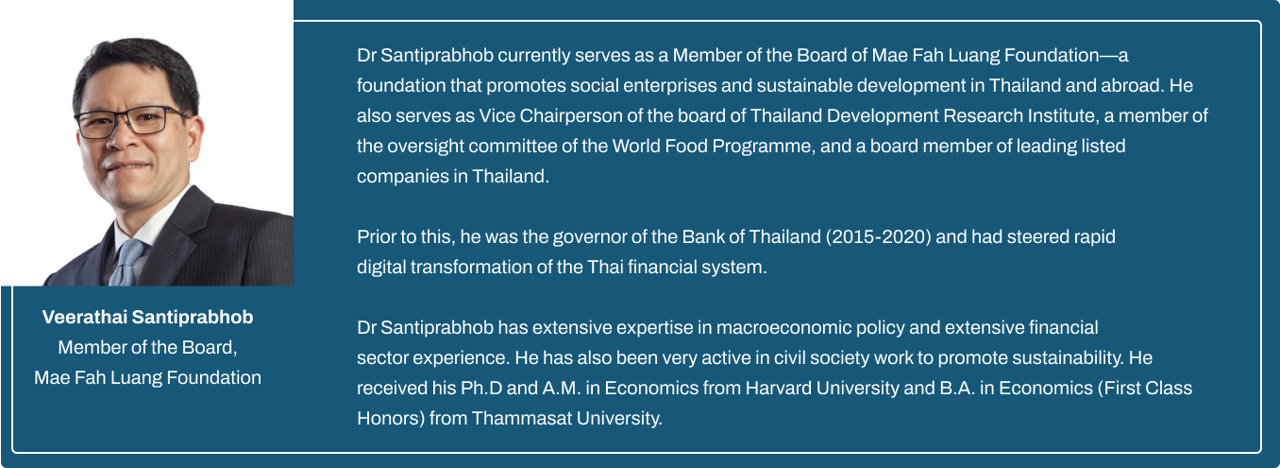Today, we are living in a peculiar time with growing uncertainties such as high inflation and high interest rates. As a result, many global brands have scaled back their operations and reduced headcounts to brace themselves for further shocks down the road.
While all seems doom and gloom, sustainability remains a bright spot on the horizon. More businesses are looking to drive growth through sustainability. This means not only focusing on top-line growth but also bottom-line growth, while also augmenting social capital by driving positive impact that benefits communities and the environment.
Over the course of my company's work with several of the world’s largest hospitality chains, airlines and cruise liners in the area of sustainable guest amenities, we help brands reach new consumers in the hospitality and travel industry. As recipient of the United Nations Sustainable Development Goals Pioneer for Circular Economy, I know first-hand the impact sustainability can have on business.
Below are three practical ways brands can aim to improve their overall business value, performance and positive impact.
Drive Brand Value With Sustainable Impact
The global intangible asset value grew from $61 trillion in 2019 to $74 trillion in 2021. According to research from McKinsey & Co, businesses in the top quartile for growth invest 2.6 times more into intangible assets than "low-growers."
With more and more companies realizing that a portion of their value can be derived from intangibles, many are pouring in resources to strategically grow their intangibles—with sustainability being an area of focus. According to a 2022 study by NielsenIQ, 78% of consumers say "a sustainable lifestyle is important to them." Brands that invest in sustainability can attract more customers and, in my experience, typically charge a higher price for their products.
In October 2022, LVMH announced an energy efficiency framework in partnership with shopping mall owner, Hang Lung Properties, which is expected to reduce the retailer's energy footprint. From my perspective, I expect more value would eventually be derived from growth in their intangible value rather than actual energy cost savings.
Brands interested in positioning themselves as sustainable need to come out with more interesting stories in today’s competitive market. Simply changing your packaging and reducing energy costs is no longer sufficient to convince consumers of your sustainability edge. Impact has become a more objective yardstick to evaluate whether or not your brand is truly sustainable, and this is closely intertwined with scale to derive the actual impact of a brand in the world.
Create A Superior Business Model With Circular Design
According to the United Nations, the circular economy is a "new and inclusive economic paradigm that aims to minimize pollution and waste, extend product lifecycles and enable broad sharing of physical and natural assets."
Given the increasing cost pressures experienced by businesses today, this new paradigm allows brands to generate value with minimal resources and correspondingly lesser impact on the environment. Recently, H&M, a large fashion retailer, pledged to be climate positive by 2040 through a textile reuse model, promoting circular design.
Circular design can be a profitable venture when brands are able and willing to make the adjustments necessary to change the status quo. Embracing a new circularity paradigm requires a holistic end-to-end understanding from the get-go. This includes product design, which minimizes the use of materials and takes into consideration the advantages of the different types of materials, a packaging approach that delivers the appropriate outcome without over-packaging, as well as a supply chain strategy that balances business performance and environmental impact.
Reach New Consumers With Sustainable Business Models
Thirdly, sustainability can also open up new business opportunities for consumer brands. Sustainability is not just about reducing carbon emissions and waste; it also involves creating innovative solutions to environmental challenges. Sustainable practices can lead to the development of new products, services and markets.
To reach new consumers with sustainable business models, brands can aim to position sustainability at their core. Consumer brands not only have the power to uniquely differentiate themselves in today's crowded marketplace but also create an enduring competitive advantage that could lead to even greater possibilities and enhanced brand value.
If needed, consider looking for credible partners as a way to leverage each others' strengths to drive sustainability initiatives. Ideally, a partnership should only require minimal investment, without the need for brands to reinvent the wheel. Look for a complementary partner with a successful track record; repeat customers, deep capabilities and a rich ecosystem can each be powerful multipliers for creating exponential outcomes.
By embracing sustainability, consumer brands can increase their brand's intangible value, create superior circular design and open up new opportunities with new business models. With intangible value becoming a differentiator, your biggest gain could be from your sustainability initiatives—provided they are done authentically and with the right priorities.
This article was first published on Forbes (16 May 2023).
Posted 16/06/2023

















5 months ago
Beautiful country and beautiful image